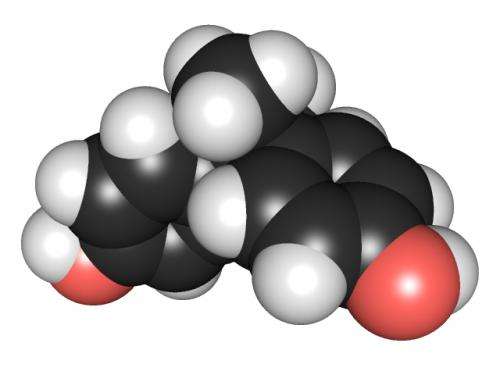Fetal BPA exposure in mice linked to estrogen-related diseases after adolescence

Low levels of BPA exposure may be considered safe, but new research published online in The FASEB Journal, suggests otherwise. In the report, researchers from Yale show that the genome is permanently altered in the uterus of mice that had been exposed to BPA during their fetal development. These changes were found to mainly affect genes that are regulated by estrogen and are implicated in the formation of estrogen-related diseases such as infertility, endometriosis, endometrial cancer, osteoporosis, prostate cancer, neurodegenerative disease, obesity and breast cancer.
"Our study demonstrates that fetal exposure to BPA leads to a detrimental change in the adult uterine response to estrogens," said Hugh S. Taylor, M.D., a senior researcher involved in the work and Chief of Obstetrics and Gynecology at Yale-New Haven Children's Hospital at the Yale School of Medicine in New Haven, Connecticut. "Our study confirms that BPA is an active compound and can negatively impact fetal development and confirms that steps should be taken to reduce maternal consumption of BPA during gestation."
To make this discovery, Taylor and colleagues used two groups of pregnant mice. One group was exposed to human ranges of BPA by intraperitoneal infusion and the other group was not. The researchers then analyzed the genetic and epigenetic profile of the uterus in the female offspring before sexual maturation and examined how the uterine genes responded to estrogen in each of these groups. They found that even though changes to the uterus may not be present at birth or in early post-natal life, changes become apparent after sexual maturity. The study demonstrated a direct change in the estrogen responses of almost 1,000 genes after fetal BPA exposure.
"This study reaches into the antecedent fetal exposure axis and reveals a striking, delayed onset of uterine gene expression effects in the offspring," said Thoru Pederson, Ph.D., Editor-in-Chief of The FASEB Journal. "To the extent that these findings could be envisioned to translate to the human, we have in this study a very important body of information."
More information: E. M. Jorgensen et al, Preferential epigenetic programming of estrogen response after in utero xenoestrogen (bisphenol-A) exposure, The FASEB Journal (2016). DOI: 10.1096/fj.201500089R













